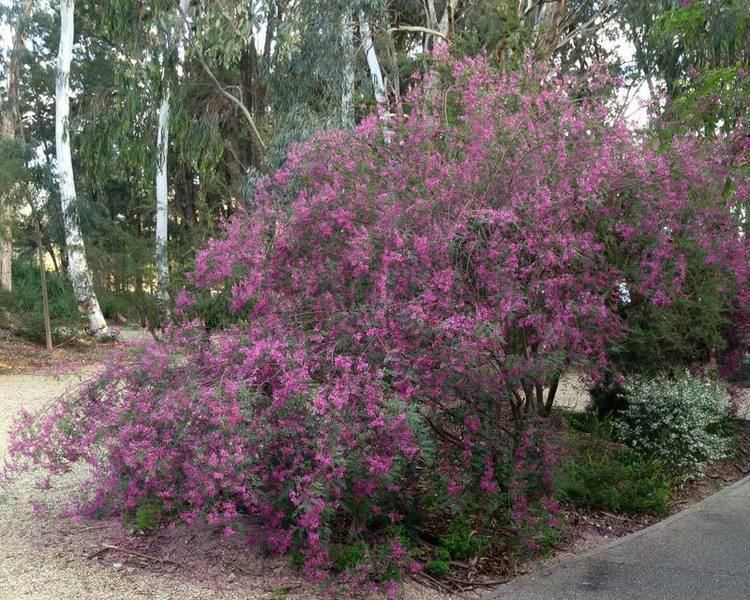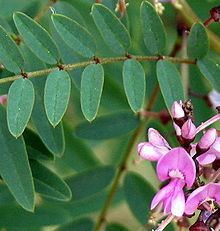Rank Species | ||
 | ||
Similar Bursaria spinosa, Bursaria, Goodenia ovata, Indigo, Pultenaea | ||
Indigofera australis, known as Australian Indigo, is an attractive species of leguminous shrub in the genus Indigofera (Fabaceae family). The genus name "Indigofera" is Neo-Latin for "bearing Indigo" (Indigo is a purple dye originally obtained from some Indigofera species), while "australis" from the Latin, means "southern", referring to the geographical distribution of the species.
Contents

Distribution

A very common and widespread species in Australia. It grows in a variety of different habitats, mainly open woodland and eucalypt forest, but also in desert and in the margins of rainforest. Widespread in southern Australia from the southeastern Western Australia to northeastern Queensland.
Description

Its natural habit is upright, to 2 m (7 ft) high, with flexible stems. The leaves are pinnate, openly spaced on the stems, around 10 cm long and velvety smooth to the touch. The flower color is unusual, ranging through soft purple hues, often pinkish and a change from other species flowering at the same time. The flowers are smooth, in short spires in the leaf axils, freely produced and showy, outlining the curves of the stems. They may open at any time from mid-September and may continue till November in a cool spring.
It can regrow and sucker from rootstocks and lateral roots after fire.
Uses
The attractive flowers, and the plants adaptability to grow in different situations make it suitable as an ornamental plant in Australia.
The Australian aborigines crushed the leaves and added these to water to kill or stun fish and eels.
The leaves and stems produce yellow-fawn dye with alum as mordant.
Habitat value
It is an excellent habitat plant for wildlife. Flowers are a pollen and nectar source for many native insects, including native bees and wasps. The plant is a useful food plant for butterfly larvae (caterpillars):
